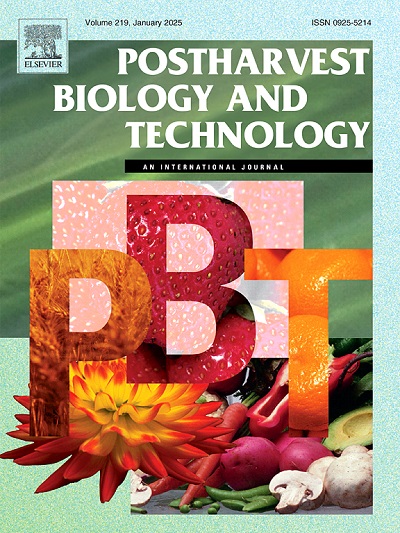Fruit quality, antioxidant components and gene expression in different Rubus species during fruit development
IF 6.4
1区 农林科学
Q1 AGRONOMY
引用次数: 0
Abstract
Rubus fruits are rich in various nutrients that exhibit strong antioxidant activity and are medicinally valuable. In this study, we measured the fruit quality and antioxidant content of Rubus hirsutus, Rubus chingii and Rubus idaeus at different preharvest and postharvest stages, as well as antioxidant enzymes that encode gene expression. Based on the results, postharvest R. hirsutus fruit contains high contents of sugar and acid, and R. chingii exhibits a strong antioxidant capacity and can be used as an important source for extracting antioxidant substances. The correlation between antioxidants and their related genes varies among different species of Rubus. The SOD activity of R. idaeus was significantly negatively correlated with RuSOD2 and RuSODCP.2. There was a positive correlation between POD activity and related genes in R. hirsutus. The POD activity of R. idaeus was negatively correlated with RuPOD, RuPER25 and RuPROX6, but positively correlated with RuPER17. This study provides a reference for future studies on the quality, antioxidant extraction, and regulatory mechanisms of Rubus fruits.
求助全文
约1分钟内获得全文
求助全文
来源期刊

Postharvest Biology and Technology
农林科学-农艺学
CiteScore
12.00
自引率
11.40%
发文量
309
审稿时长
38 days
期刊介绍:
The journal is devoted exclusively to the publication of original papers, review articles and frontiers articles on biological and technological postharvest research. This includes the areas of postharvest storage, treatments and underpinning mechanisms, quality evaluation, packaging, handling and distribution of fresh horticultural crops including fruit, vegetables, flowers and nuts, but excluding grains, seeds and forages.
Papers reporting novel insights from fundamental and interdisciplinary research will be particularly encouraged. These disciplines include systems biology, bioinformatics, entomology, plant physiology, plant pathology, (bio)chemistry, engineering, modelling, and technologies for nondestructive testing.
Manuscripts on fresh food crops that will be further processed after postharvest storage, or on food processes beyond refrigeration, packaging and minimal processing will not be considered.
 求助内容:
求助内容: 应助结果提醒方式:
应助结果提醒方式:


